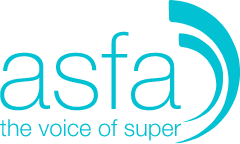Technology powering superannuation has come of age and today offers more than digital enablement and efficiency. New levels of automation make it easier for funds to insource core services, such as investment management and member and employer services; and conversely outsource non-core services such as platform maintenance and regulatory and transactional fulfillment. Increasingly, funds are re-defining priorities for these insourced and outsourced functions as they seek to reduce risk and costs.
In the post-Royal Commission world, superannuation members are much more aware of the level of service they’re entitled to. For funds, this means more consideration needs to be taken in the delivery of services to members who now want service 24/7, as they expect from any other customer-led organisation.
Automation for better member engagement during legislation changes
A highly automated technology delivery model means taking a ‘less hands-on keyboard’ approach to deliver the services members want and expect. By streamlining high frequency transactions, such as contributions and payments—which when assessed and executed automatically can reduce complexity, costs and complaints—will allow funds to better focus on servicing members.
Ongoing enhancements to regulatory change and new legislation will increasingly require compulsory levels of automated and straight-through processing to ensure a fund stays operational, meets its members’ best interest duty and delivers the type of services members expect.
Recent reforms have meant funds are obligated to offer life insurance as an opt-in rather than an opt-out basis for members under the age of 25 – or with a super account balance of less than $6,000. For those funds with the right technology in place, members can conveniently do this online via a core transactional and record keeping system offering real-time access to transactions and data from members to service teams through an online portal, and to members generating automated letters, emails, SMS and social media or hook into a telephony solution.
However, for funds without automated technology this has meant manual processes around document management, workflow applications unable to manage exception-based processes and a reliance on manual and interruptible processes. The experience, for both members and fund staff could not have been a positive one. Delays in hard copy mail-outs and long call centre wait times meant the risk of poor member experience and backlash on social media.
Moving beyond the annual digital statement engagement relationship
The Federal Government and its agencies are innovating how services are delivered to fund members as part of their commitment for the Protecting Your Super legislation. Transferring inactive low balance accounts to the ATO, cancelling insurance for inactive members and making changes to fees means more member engagement than ever. As part of this initiative, the ATO is embarking upon education campaigns across social media for a ‘hard reconnect’ with inactive accounts to ensure all working Australians (with a superannuation balance) make the most of their retirement savings. So, with potentially 3.5 million accounts rolling over and needing to reunite with their core super fund, automated administration software is quickly becoming a necessity. For those funds that have not optimised and automated their funds administration, there is a need to call in the cavalry, employ extra admin support and call centre staff to handle the spikes in transaction volumes – all which might have been avoided by implementing automated, scalable technology to meet transactional spikes, without a spike in operational cost.
The way of the future
Legislative changes from the ATO have and will continue to trigger a high volume of transactions across the superannuation network and automation will be the only way for funds to cope with this demand. Members are more aware than ever that their fund needs to act in their best interest, and while reading hard copy correspondence directing them to a portal, contacting call centres with long wait times or completing downloadable PDF forms that require a response via post back to their fund enable a fund to meet best interest obligations, it falls short of meeting member engagement expectations.
There is a great opportunity to turn legislation from something funds ‘must do’ into an opportunity for a great member experience. Automated solutions are open to integration through application programming interfaces (APIs) to best serve front-office, or member requirements. Members expect to be notified online or via email, with the digital ability to record a response. Funds that implement automated systems to take rapid control of their front-end and member-facing digital experience are on the right track managing these regulatory impacts through quicker more efficient digital member communications, recognising the need to move beyond the annual digital statement, still common for many funds.
Deliver products and services at the lowest possible cost
There are new drivers for change all the time—including legislative requirements and new digital service opportunities—such as members being able to claim a tax deduction for their super, making an election to retain insurance, or to retain membership of the fund rather than be sent to the ATO as a low balance member. Automation however is more than having a basic transactional website. Funds today require a change in mindset to truly transform member engagement. It’s about enabling members to self-serve at any time, providing them with rich and accessible options, while automating a fund’s back-end administration – including both straight-through and exception-based processing. This reduces risk and cost, and creates efficiencies of scale as funds grow.






